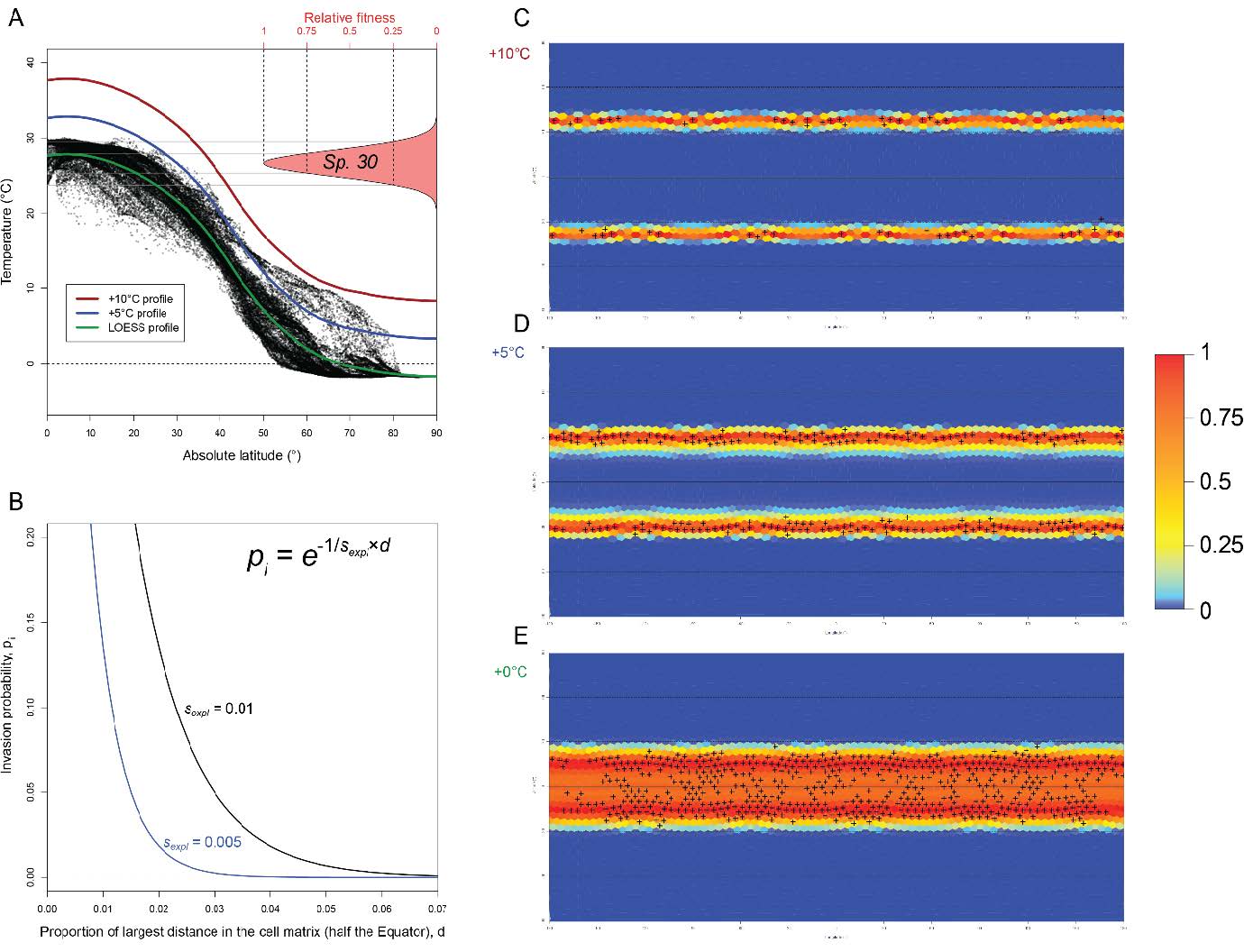SPex: Spatial patterns of global diversity dynamics in warming scenarios
PI: A. Kocsis
Current climate change is expected to have a definite effect on the global marine biota and will likely lead to not only local, but also global extinctions. Species distributions rearrange during global warming; marine species track the isotherms of their thermal niches and studies suggest that low-latitude species will be more affected by local extinctions (extirpations). Predictions on the geographic patterns of complete extinctions are lacking, although past mass extinctions are often invoked as analogues for possible future scenarios. Inference on the causes of mass extinctions is often based on recorded geographic patterns of species extinctions, but the relationship between warming and these patterns is based on assumptions and thought experiments, rather than spatially explicit models that consider Earth’s geometry, stochastic processes and multitudes of species.Project SPex addresses this issue by simulating extinction scenarios, which I organize around the central hypothesis that extensive warming leads to pronounced geographicpatterns of extinctions, preferentially affecting lower latitudes. To assess this and associated hypotheses, I will construct a high-performance modelling framework of species distributions with cellular automata, and simulate spatially explicit biotic responses to warming with increasing system complexity: in theoretical settings first, and then using data of recorded, warming-related mass extinction scenarios. With the cellular automaton approach, assigned temperature niches can be used to limit species distributions, while other influencing variables can be modelled as random processes that expand or contract geographic ranges of thousands of virtual species. Both recent (OBIS, Aquamaps) and fossil (Paleobiology Database) biotic data will be used to constrain the models that will also incorporate continent reconstructions and general circulation modelling results. Abiotic input data will be used to reconstruct possible scenarios of hyperthermals, such as the Permian/Triassic, Triassic/Jurassic and Pliensbachian/Toarcian events, as well as the Paleocene-Eocene Thermal Maximum. Patterns of future extinctions will also be assessed using modelled abiotic parameters of simplified scenarios beyond RCP8.5. Simulation patterns will also be contrasted with extirpation and invasion patterns of gridded fossil data. Thus, the project intends to integrate past mass extinctions and future settings by adding invasions and extirpations to the past and species extinctions to predicted future scenarios.



Our Social Media
News